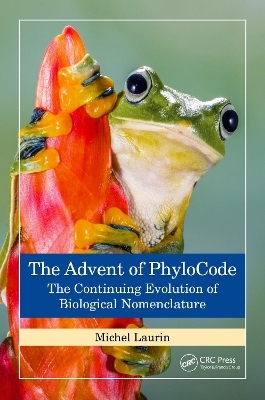
The Advent of PhyloCode
CRC Press (Verlag)
978-0-367-55288-6 (ISBN)
Biological nomenclature is an essential tool for storing and retrieving biological information. Yet traditional nomenclature poorly reflects evolutionary theory. Current biological nomenclature is one of the few fields promoting deliberately vague usage of technical terms. A new code based on evolutionary studies and phylogenetic results (the PhyloCode) will be a major milestone in biological nomenclature. Unfortunately, The PhyloCode and the companion volume are highly technical publications intended for practicing systematists. This book will reach a broader readership of those using nomenclature but who remain unaware of its theoretical foundations.
Key Features
Responds to the biodiversity crisis and the recent implementation of the PhyloCode
Summarizes the spectacular progress of phylogenetics which makes it both increasingly easy and crucially important to define precisely taxon names
Provides a 300-year historical perspective featuring high-profile characters, such as Linnaeus and Darwin
Summarizes for a broad readership a widely scattered, highly technical and underappreciated scientific literature
Documents the activities of the International Society for Phylogenetic Nomenclature, a scholarly society in which the author has played a prominent role
Michel Laurin has been a tenured CNRS (Centre National de la Recherche Scientifique) research scientist since 1998. His specialty is the evolution of vertebrates from the Devonian to the Triassic. His current interests include dating the tree of life, as well as other problems such as the invasion of land by vertebrates, the appearance of the tympanum (ear drum), and origin of extant amphibians. This work has introduced new methods for paleontology and evo-devo, some of which have been implemented in computer programs. He has supervised 7 doctoral students. He has served on the governing council of various scientific societies, including the French Paleontological Association (APF), where he completed a term as President. More importantly, after adopting phylogenetic nomenclature early in his career, he served the ISPN (International Society for Phylogenetic Nomenclature), which develops and promotes a new code of biological nomenclature (the PhyloCode) as both Secretary (several terms, including a current one) and President. He currently serves on several editorial boards of scientific journals, including the Journal of Evolutionary Biology. In January 2011, he became Chief editor of the Comptes Rendus Palevol, which is published by the French Academy of Sciences. He has recently received the Charles Bocquet prize, which is awarded every three years by the Zoological Society of France to honor a career dedicated to evolutionary zoology. Since 2014, he has been the director of the team "Phylogeny and Diversification of Metazoans" in the National Museum of Natural History (Paris), which includes 14 tenured or emeritus scientists, in addition to post-doctoral and doctoral students.
Chapter 1: The Roots of Biological Nomenclature – A Short History of Systematics through the 19th century. Chapter 2: The Advent of the Rank-Based codes. Chapter 3: Rank-Based Nomenclature and Evolution. Chapter 4: Phylogenetic Nomenclature. Chapter 5: Comparisons with the nomenclature of other sciences and beyond. Chapter 6: Controversies. Chapter 7: Conclusion: The Future of Biological Nomenclature.
| Erscheinungsdatum | 08.08.2023 |
|---|---|
| Zusatzinfo | 6 Tables, black and white; 25 Line drawings, black and white; 7 Halftones, black and white; 32 Illustrations, black and white |
| Verlagsort | London |
| Sprache | englisch |
| Maße | 210 x 280 mm |
| Gewicht | 576 g |
| Themenwelt | Naturwissenschaften ► Biologie ► Botanik |
| Naturwissenschaften ► Biologie ► Zoologie | |
| Weitere Fachgebiete ► Land- / Forstwirtschaft / Fischerei | |
| ISBN-10 | 0-367-55288-4 / 0367552884 |
| ISBN-13 | 978-0-367-55288-6 / 9780367552886 |
| Zustand | Neuware |
| Informationen gemäß Produktsicherheitsverordnung (GPSR) | |
| Haben Sie eine Frage zum Produkt? |
aus dem Bereich


